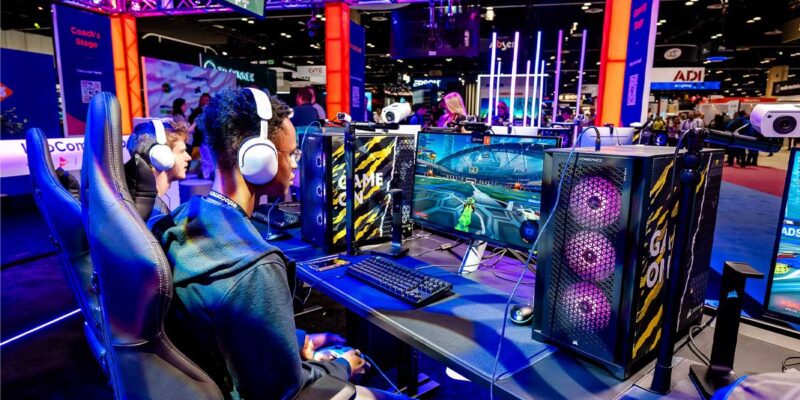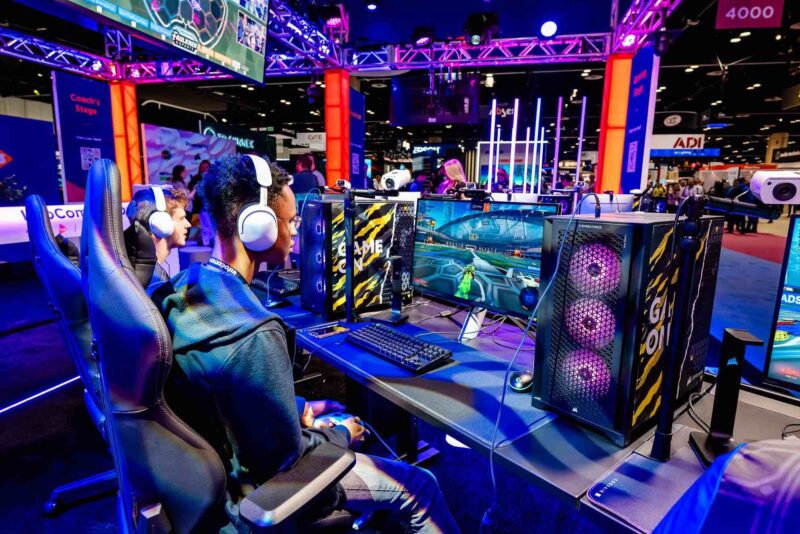Digital Signage Day of LAVNCH WEEK 2.0: ‘Gotchas,’ Watch-outs and Getting Safely Through the Doors

Digital Signage Day was our fifth and final day of LAVNCH WEEK 2.0. With support from our partners Samsung, NEC Display and Epson — and a great partnership with DSE and the DSF — the content from these supporters and our session educators was fantastic.
Read on for the story.
Keynote: Digital Signage Gets Back to Business: New Norms, New Opportunities
There’s a rich opportunity in expanding with back-to-business services in digital signage. But every “normal” is changing. How do we expand without having had the time to deep-dive into this new world? Laura Davis-Taylor’s keynote Friday on Digital Signage Day was the kick in the butt we all needed to start answering these questions.
Our industry has always been so good at figuring out so much, Laura started. So when health became the number-one concern, we, and our technology, continued to be the people/thing customers were looking to for answers — for solutions they could bring to their end users, like, now. So, Laura asked, how do we come together as an industry, not just to solve the issues of today but to bring peace of mind and to make it simple “by design?” Her advice: it starts with helping customers feel safe, even as we keep the consumer experience (CX) alive. “Our industry can do this where others can’t,” Laura said. There’s never been a more important time for us, and our ecosystem in digital signage, to work with our end users to bring solutions they can trust and that will help them. There are no answers right now — it’s how we can create better experiences by making customers feel safe in the space. Remember that we’re coming into any space, first, as human beings.

In our pre-LAVNCH interview with Laura, we garnered that if you don’t already have ecosystem partners, find them and have everybody operate off of these same principles. But something else we discussed here: what we do now can’t just be about making a quick buck. Your end users need to be able to trust and rely upon you in the long haul. It starts with a mindset, Laura continued. There’s a different mindset between someone checking the boxes, doing the minimum (making that quick buck I mentioned), and others who are doing their best to enable the enterprise to thrive. Below are the boxes Laura says these two groups are trying to check. See the difference?
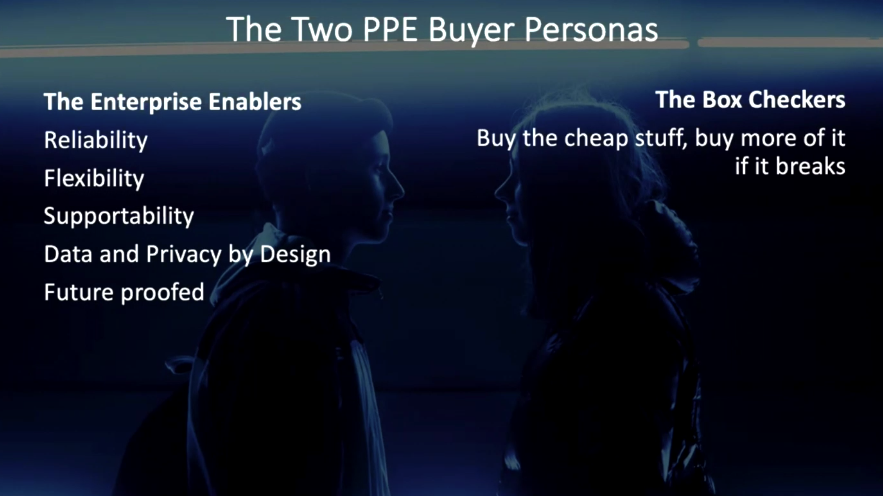
As we’re listening to what our customers are needing and saying, “Great. How can we help you?” we have the ability to work with our partners within the full digital signage ecosystem. In the end, people need to know they can come into your space and be safe and feel under control, no matter where the wind blows. Laura also stressed how important flexibility is today. What you’re recommending needs to be pivotable (that’s an actual word in the dictionary, by the way). It needs to be future-proof. It needs to offer the data and analytics — but absolutely keep privacy at the center. Who we trust and who we buy from in our digital signage network need to consider the latest issues in privacy.
I loved Laura Davis-Taylor’s keynote on considerations and opportunities in digital signage today. I hope you found her points helpful in the context of your digital signage deployments.
LAVNCH & Learn: Back-to-Business Technologies & Tactics: A Holistic View of New Category
When we consider back-to-business technologies in digital signage, we need a full, holistic view of the category. Friday, for LAVNCH WEEK 2.0, Dane L Oldridge of Intel explored the critical watch-outs — both for your business and for the category in general — when making purchase decisions.
Dane’s intention, clearly stated at the start of his talk, was to bring you, our readers and LAVNCH WEEK attendees, more knowledge and to help you adapt. I loved his perspective and intention: we really are all in this together.
Here are some learnings from Dane. Put your thinking caps on.
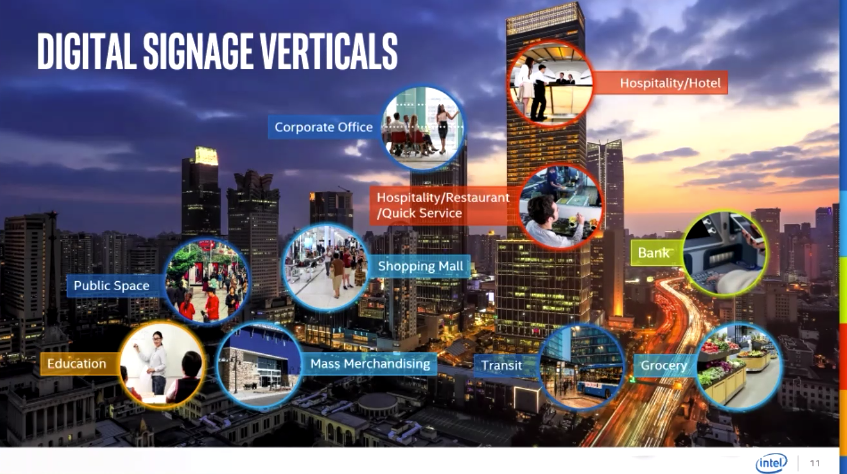 For one, Dane actually doesn’t agree with others in that sales will taper off for kiosks — he thinks, while people won’t want to touch them, people will still want to be self-served. So new modes of engagement will be necessary to grow that market, thinking of different ways to engage with the kiosk. There are a few ways to look at it, according to Dane. His examples included a voice-activated system (AI) called Sodaclick; Spacee, a more specific hover system (gesture-based); SigmaSense (operational with or without touch); and Ultraleap (part gesture, part contactless touch). Dane says these technologies can totally change the game, so be watching out for them.
For one, Dane actually doesn’t agree with others in that sales will taper off for kiosks — he thinks, while people won’t want to touch them, people will still want to be self-served. So new modes of engagement will be necessary to grow that market, thinking of different ways to engage with the kiosk. There are a few ways to look at it, according to Dane. His examples included a voice-activated system (AI) called Sodaclick; Spacee, a more specific hover system (gesture-based); SigmaSense (operational with or without touch); and Ultraleap (part gesture, part contactless touch). Dane says these technologies can totally change the game, so be watching out for them.
A hybrid experience, Dane added, will be at the forefront for customers as they continue branching out of their homes. I appreciated Dane’s breakdowns of what that could look like in each vertical — starting with retail, then getting into hospitality. Something he urged I appreciated: If you aren’t bringing AI and computer learning into all this, you’re missing out.
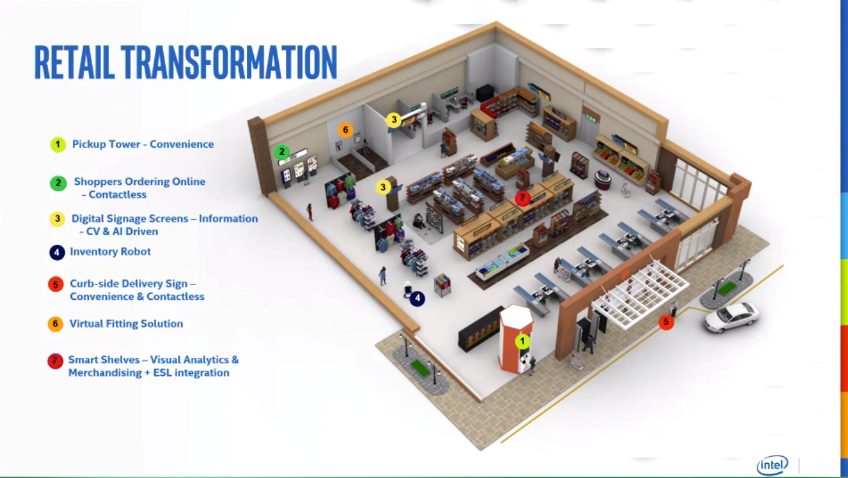
Lastly, we heard about Dane’s “Gotchas & Watch-outs”:
- Want to do digital signage? Start with a content strategy.
- Cost and price are different. Just because it’s in your budget doesn’t mean it’s a good long-term solution.
- Digital signage → not the TV on the wall. Integrators know this, but do your partners?
- Analytics are “table stakes”; the AAA process for DOOH is critical.
- Something will often go sideways, especially now. Words of wisdom, we think.
- Choose your partners wisely.
As Dane left us with these final points, he noted that very rarely can one group or one company do it alone. Partnerships, partnerships, partnerships.
Panel: Safely Through the Doors
“Safely Through the Doors” is a panel title that should grab your attention, just like the digital signage technology you specify each and every day. In this panel, moderated by Dave Haynes, we heard about some of the common challenges of today. We then learned how to face them tomorrow — with AV and digital signage, of course.
Here are some key takeaways from each panelist. Listen and learn.
Dave Haynes, Founding Editor, Sixteen:Nine. This is a unique time for digital signage, Dave pointed out as he kicked the panel off as moderator. The pandemic has certainly forced new consumer habits. Or, at the minimum, a new mindset. But the folks who had screens in place before the pandemic are probably pretty happy they did, he added. On the flip side, businesses that didn’t are realizing what they were missing. Dave did a great job moderating our panel Friday. By the way, in case you didn’t know, Dave is the founding editor for Sixteen:Nine, a publication devoted specifically to digital signage. It offers fantastic insights.
Michael Johnson, Senior Account Executive, McCann Systems. For Michael Johnson of McCann Systems, an independent AV design-build firm, the two most important things right now in digital signage are being flexible and being able to provide remote management support. What’s happening in New York is not what’s happening in Ohio. Every state has its own laws that we’re all watching regarding PPE, etc. Integrators are seeing delays, Michael said, in getting into buildings. While some workers are out of office, it’s made some integration projects easier. In other scenarios, what would be a three-month project has now become a six-month one. Being mindful of the local rules and precautions — state by state, city by city, even building by building — will continue to be important in being flexible and consultative, even more than we normally are in AV.
George Anderson, Editor-in-Chief/Associate Publisher, RetailWire. “What’s normal now is not going to be normal tomorrow,” George said. The virus doesn’t care about politics, doesn’t care about your bottom line or your customer counts. What George is hearing and seeing is that signage, in general, is critically important — there are a lot of messages out there competing with one another, but not sending clear messages to your customers right now is a recipe for disaster. George sees all signage at its very basic element as being the “FAQ of the physical world.” Every question you need, from price to store hours to policies on store requirements, can be a dynamic form of communication in storytelling. It can also, frankly, bring joy to the customer experience. We’re all in this together — let’s look out for each other, George added.
Chris Gibbs, President at Exponation LLC. Chris Gibbs, as the president of Exponation (which organizes events like Digital Signage Expo), is very familiar with the conversations we’re having now — how do we ensure the safety of attendees and exhibitors and workers for our live events? We’re going to have a lot of signage, Chris said. Chris spoke briefly about DSE, for instance, which the Exponation team is working tirelessly on to ensure the event can be properly executed so we’re all safe as the rules and protocols are communicated out through digital signage.
Chris Mertens, Vice President of US Sales, Displays at Samsung Electronics America. Chris has been getting a lot of questions from customers in retail, hospitality and all verticals that have recently opened or are on the brink of opening — even with small questions like how to get up the elevators safely based on the space. Digital signage and the ability to change the messaging on it can help that restaurant, that hotel, that store enable information to be more clearly spread. But it’s certainly application by application, Chris pointed out. How a retail business opens is going to be different from how a car manufacturer opens. We can help guide our customers through, even as the timelines for opening state by state are constantly changing.
Gary Kibel, Partner, Davis & Gilbert LLP. It’s getting very complex very fast regarding privacy, Gary Kibel — the lawyer of our panel — said. Businesses are concerned about liability related to coronavirus infections, collecting too much data, etc. Gary argues it’s about finding the right balance. Remember, protections like HIPPA only apply to healthcare providers. But there all other laws adjacent to what we do in AV tech in the works — mind you, many currently offer conflicting guidance from government authorities. Be aware of these rules and protections, he advised. It’s a challenge to find the right balance of scanning/screening technologies but there have been some laws proposed on the federal level to protect both businesses and individuals. While those laws have not been passed yet, for now, businesses should do what’s “reasonable within the circumstance” (and do not be intrusive to the point that there’s an obvious privacy problem). And when you collect this information, Gary explained, know that whoever collects it needs to be properly trained on how to do it, where to store the data, etc. so it does not leak out to unauthorized parties.
Recaps on Recaps on Recaps
Five recaps of LAVNCH WEEK 2.0 down. I hope you had as much fun this week as I did.
UCC Day: Revolution, ‘Next Normals’ and Marriage
ProAV Day: CX, Crystal Balls and a Hot Debate on AV-over-IP
New Tech LAVNCH Day: Temperature Checks, Holographic Tech and a Whole Lot of UCC
EdTech Day: Hybrid, HyFlex and Where EdTech Is Headed
Digital Signage Day: ‘Gotchas,’ Watch-outs and Getting Safely Through the Doors. (You’re reading this now.)
You can check out all our LAVNCH WEEK 2.0 coverage — like these summaries and all the product videos/feature videos from our supporters — here.
Now I leave you to go take a very long nap.



